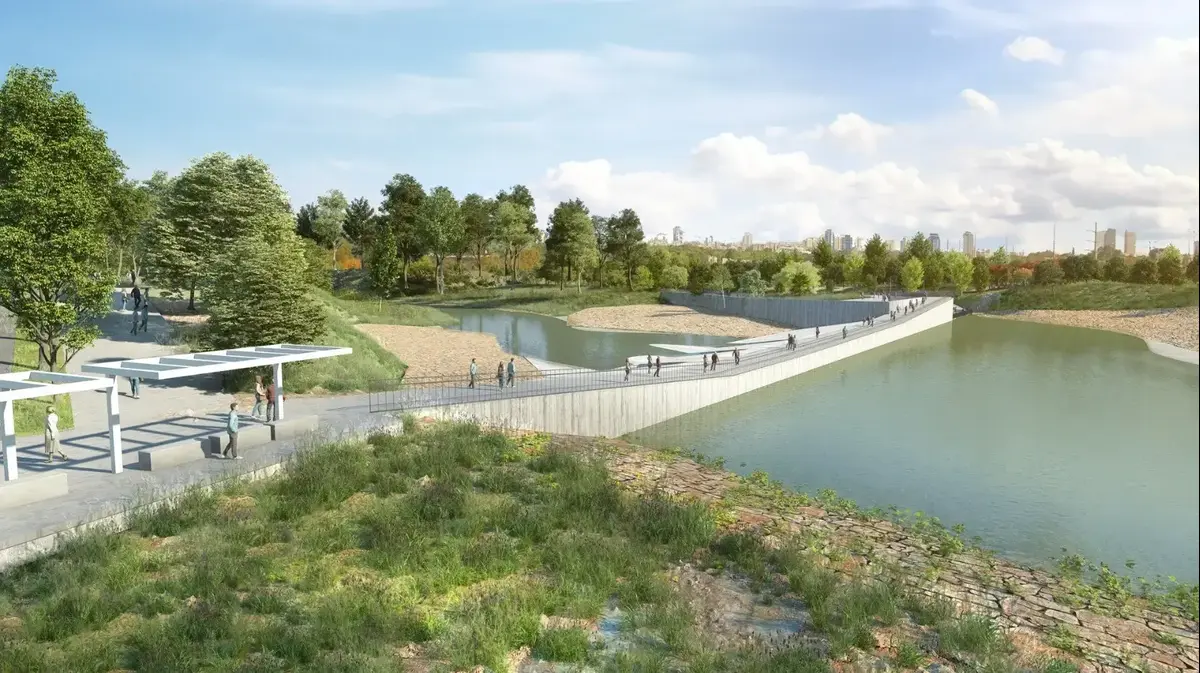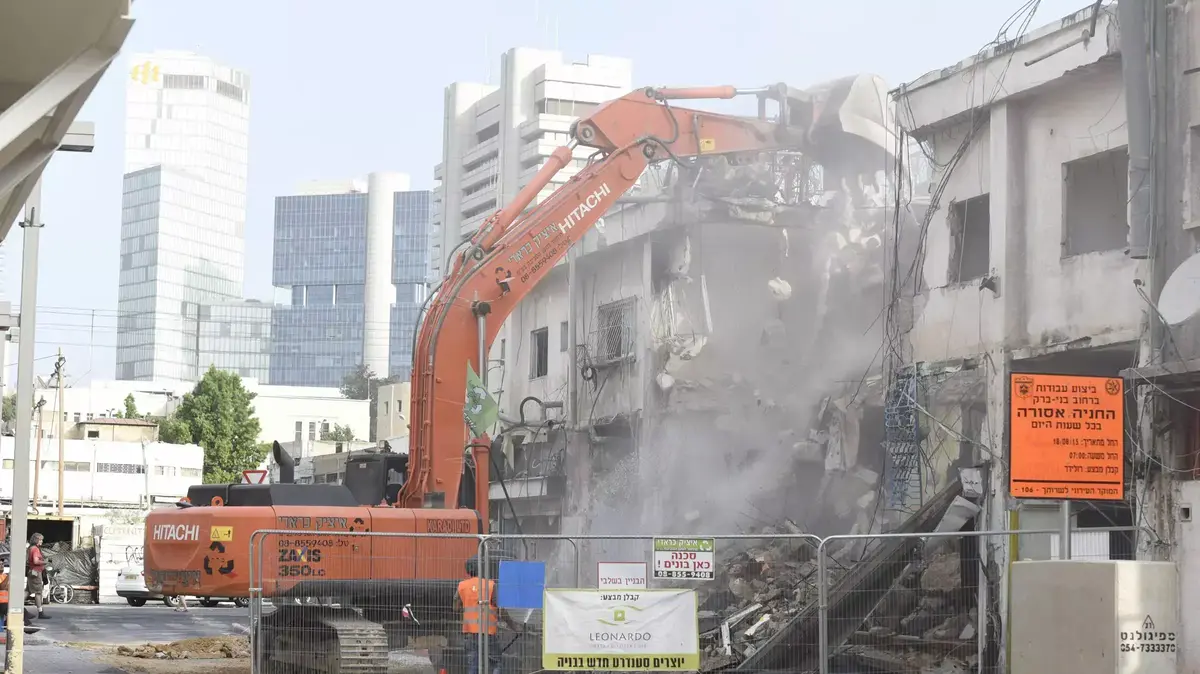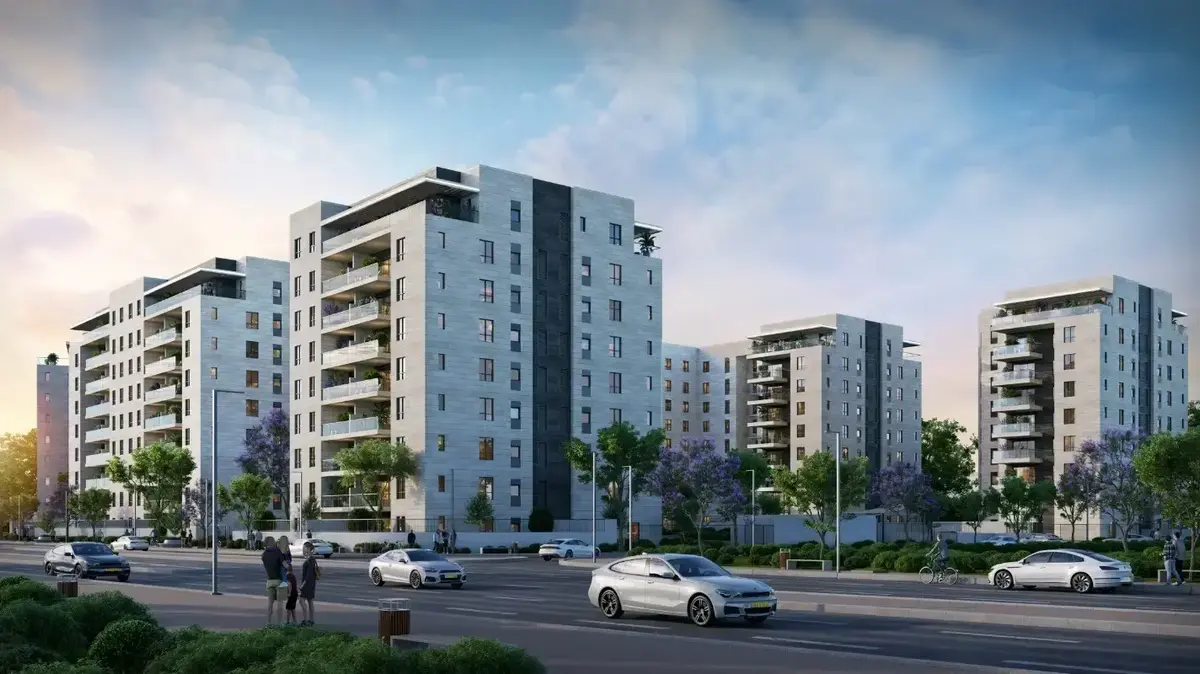The railroad crossing in southern Gush Dan will cancel plans for a quarter of a million apartments
The Central District Committee decided on an extraordinary move to remove from the planning table the construction of 250,000 apartments in Rishon Lezion, Ramla, Lod and Beer Yaakov. Reason: Canceling the light rail hotline designed to connect them
Dalit Silver (Photo: Ministry of Finance)
Dalit Zilber Chairman of the District Planning and Building Committee Jerusalem District Tel Aviv District Director of Planning Director of Planning Administration (Photo: Ministry of Finance, official website)
Eliminating the light rail hotline charges a heavy design cost. Globes has learned that the District Planning and Building Center has canceled plans for the construction of a quarter of a million apartments along the planned route - in the cities of Rishon Lezion, Lod, Ramla and Beer Yaakov. The extraordinary decision was made at a committee meeting yesterday, which discussed the policy outlined by the Planning Administration along the light railways.
According to the National Outline Plan TAMA / 23 / A / 4, seven light rail lines are approved in the Tel Aviv area (three are metro lines). Together, they create a transport network aimed at central Tel Aviv and pass through ten municipalities in the center of the country. The delegations are usually located in the city centers and along the main urban routes. This network is intended to meet the expected development volumes in the Tel Aviv metropolitan area, and therefore a mass of residential and employment construction is planned alongside them.
Based on the outline plan, detailed plans have been promoted that allow for the establishment of the Red Line, which connects Petah Tikva to Bat Yam, and is expected to be the first to open for travel in about two years. The purple line that comes to Judah, and the green line that comes to North Rishon Lezion. The fourth line is the heat line planned to serve the southern part of the Tel Aviv metropolis. He connects Lod, Ramla, Beer Yaakov and Rishon Lezion and links them to other passenger-intensive transport systems.
According to planning, the line begins in the west of the city of Rishon Lezion in a parking and maintenance complex (Depot), passes through the Alef complex in the west of the city and continues east through the Rishon Lezion city center. "That is Isaac Shamir. As mentioned below, it is planned to pass through Beer Yaakov, Ramla and Lod. All this is expected to remain on paper.
More in Walla! NEWS More in Walla! NEWSThe city of Harish is growing fast, so why aren't all apartments hijacked?
To the full articleLight Rail Track Hotline
Light Rail Track Hotline (Photo: Globes, PR)
Plans for 633,000 apartments
The Central District is the largest district, and therefore also the center of all national housing destinations. According to the strategic plan for 2040, another 633,000 housing units must be added to localities within the area (40% in urban renewal), and these are currently in planning stages, strategic plans for various issues, including employment areas, open spaces and infrastructure required for planned residential areas.
In order to meet its goals, the District Planning Bureau, led by county planner Guy Kaplan, recently explored the potential for development along light rail routes. According to the document attached to the resolution passed yesterday, approximately 300,000 housing units and tens of thousands of square meters for commerce, offices and employment can be added in Central District, based on the planned network of the JNF (red, green, purple and brown). The JNF route is within walking distance of about 400 meters on each side.
In other words, almost half of the national strategic target presented to the county can be resolved through light rail lines. This is because the policy document considers its impact range up to a distance of 400 meters on each side of the axis. This, of course, greatly increases construction along the same 400-meter strip, which surrounds the light rail lines.
And here's where the heat line comes: The bulk of the planned development is along the 28-mile line of this entire Central District train line, and according to the district commission's decision document, the cities along the route "all carry the accelerated development burden in Central District. These cities multiply and even more, the population in their area and the light rail line is a key part of the transport solutions that the planning of the same housing units relies on. ”In total, the district committee estimated that a quarter of a million new apartments were planned along the heat line.
However, recently the Ministry of Transport decided to cancel its intention to operate a light rail along the axis, and settle for the BRT (BUS RAPID TRANSIT) project in Haifa's metronome. For the provincial committee, this is a real blow, as the BRT is inferior to almost every light rail: its passenger capacity reaches a quarter of the capacity of light rail passengers, its operation is more expensive, and the public space less well, because unlike the light rail in Jerusalem, which allows Accessibility, the matron passing through the streets of Haifa, actually crosses both sides of the street. In light of this, the committee yesterday decided that in such a situation the large housing programs cannot be promoted, and because of the low utility of the BRT, the situation will not be possible to formulate a policy document that will consider BRT and add more housing units to the existing situation.
More in Walla! NEWS More in Walla! NEWSHow can you get proper medical treatment without tearing your pocket?
In collaboration with Phoenix
To the full article"Addition to development will create planning distortions"
The committee's decision reads: "The decision not to promote the hotline as a JNF (light rail, UM) prevents the anticipated urban renewal along the route, public transportation, entrepreneurship, renewal of public spaces and revitalization of commercial streets. The cities along the line were supposed to cross the heat line and the potential for development would be significantly smaller as well as the quality of planning along this axis. The committee receives the planning bureau's assessment that it has the potential for planning about 250,000 housing units and tens of thousands of square meters of commercial and office space in proper and proper urban planning. Uncertainty of actual implementation of the JNF hotline, there is serious concern that the significant additional development Possible through the policy document will waive unanswered adequate transportation, planning and distortions generate disproportionately overload the existing deputies. Therefore, the committee decides not to implement the scope of the proposed rights document in this policy document as long as there is uncertainty regarding the execution of the JNF hotline. "
Central District Planner Guy Kaplan told "Globes" that "the Commission has decided to update the planning policy in light of the cancellation of the heat line. We cannot add new housing units that will bring in another new population and ignore the work that the heat line that would address this population has been canceled."
Planning Director General Dalit Silver added: "The Central District's decision is the proof that the entire planning policy is aimed at planning that relies on quality public transport. We are sorry that it was precisely in the areas of demand such as Rishon Lezion that they decided to give up the heat line that was supposed to cater to thousands of residents. This Central District decision is in accordance with a planning document promoted by the Planning Administration that aims to instill the notion that traffic in urban centers in Israel should first and foremost rely on pedestrian traffic, cyclists, and public transportation. We don't want new neighborhoods to be built without access to mass transit stations. "









